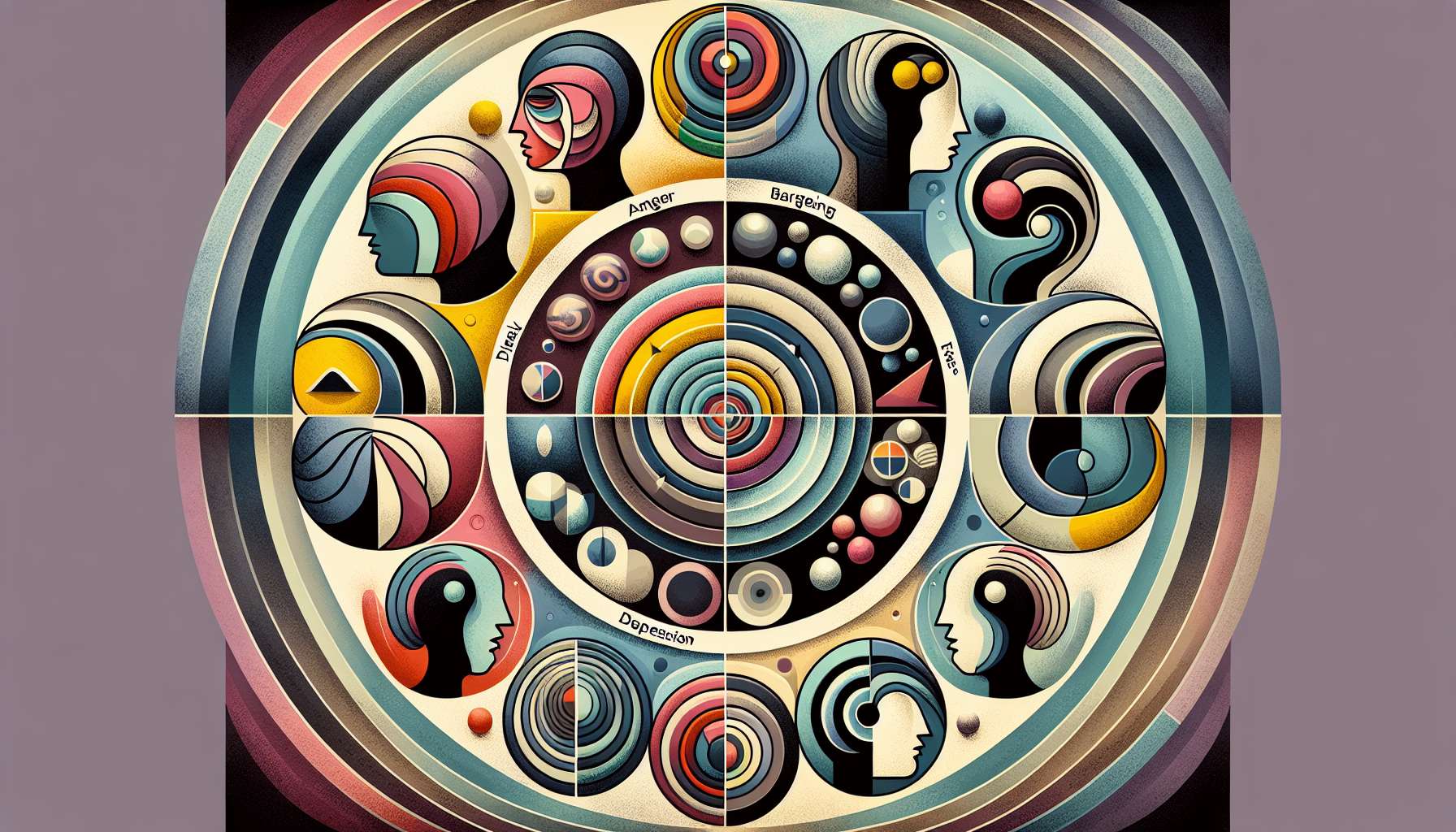The model of stages of grief proposed by Elisabeth Kübler-Ross in 1969 is one of the most well-known and used to describe the grieving process. Although criticized for its linear aspect, it offers an interesting framework for understanding the emotional and cognitive reactions that mark the journey through grief. Kübler-Ross describes five main stages: denial, anger, bargaining, depression, and acceptance.
Denial is often the first reaction to the announcement of a loss or death. It is a psychological protection mechanism that prevents being overwhelmed by a reality that is too painful. The person may have difficulty believing what is happening to them, be in a state of shock or emotional detachment. They can deny the reality of the loss, continue to speak of the deceased in the present, keep their belongings intact. Denial is a normal and necessary phase that gradually prepares to integrate the absence.
Then comes anger, an intense emotion that conveys a sense of injustice, of revolt against the loss. It can be directed against the deceased (“why did you abandon me?“), against oneself (“I should have done more“), against those around or the medical staff (“they did not do what they should have“). Anger is a release valve that allows the suffering to be externalized and the fight against impotence. It is often poorly lived by those around who can feel attacked, hence the importance of welcoming this emotion without judgment.
Bargaining is an attempt to regain control over a situation that escapes us. The person can imagine alternative scenarios (“and if I had done this or that“), negotiate with a higher authority (“if you give them back to me, I promise to…“), look for a responsible or guilty party. It is a form of psychological resistance to avoid facing up to the reality of the loss and the irreversibility of death. This phase is often brief but can resurface periodically.
Depression corresponds to a moment of deep sadness when the loss is fully realized. The person feels down, empty, without energy. They can have sleep disorders, loss of appetite, difficulty concentrating. It is a necessary withdrawal phase to metabolize the pain, rearrange its landmarks and its investments. It should not be confused with a pathological depression that becomes chronic. It is a necessary step towards acceptance.
Acceptance is the final stage where the person learns to live with the absence of the loved one. It is not passive resignation but the recognition that life continues despite the loss. The person regains the ability to project themselves into the future, to reinvest in activities and relations. The pain subsides without disappearing, taking the form of a placated nostalgia. There can still be moments of sadness on the occasion of anniversaries or memories without undermining the regained balance.
It is essential to remember that these stages are not fixed, linear or systematic. Each person will experience their grief in a unique way, with possible round trips, blocks or accelerations. Some stages may be more or less marked, longer or shorter depending on individuals and the nature of the loss. The important thing is to respect everyone’s pace without trying to skip steps.
The Kübler-Ross model has the merit of normalizing grief reactions and framing them within a dynamic process. It allows the bereaved to better understand what they are going through and to feel less alone or abnormal. It also provides professionals with markers to identify potential complications and offer tailored support at each stage. As Marie de Hennezel aptly summarizes: “The stages of grief are not a manual but a guide to taming absence“.
Key takeaways:
– Elisabeth Kübler-Ross’s stages of grief model (1969) describes 5 main phases: denial, anger, bargaining, depression, and acceptance.
– Denial is an initial protection mechanism that cushions the shock of loss. Anger expresses a sense of injustice and revolt against the absence. Bargaining is an attempt to regain control with alternative scenarios. Depression corresponds to a moment of deep sadness where the reality of loss is integrated. Acceptance is the final stage where the person learns to live with the absence.
– These stages are not linear, fixed, or systematic. Each person experiences their grief uniquely with possible variations. The important thing is to respect everyone’s pace.
– This model allows normalizing grief reactions, offers understanding guides for bereaved and professionals. It places grief in a dynamic process without being a rigid manual but rather a guide to taming absence.
👉 To download docx (Editable) file click here : Click here
👉 To download PDF file click here : Click here
👉 To download MP3 file click here : Click here







